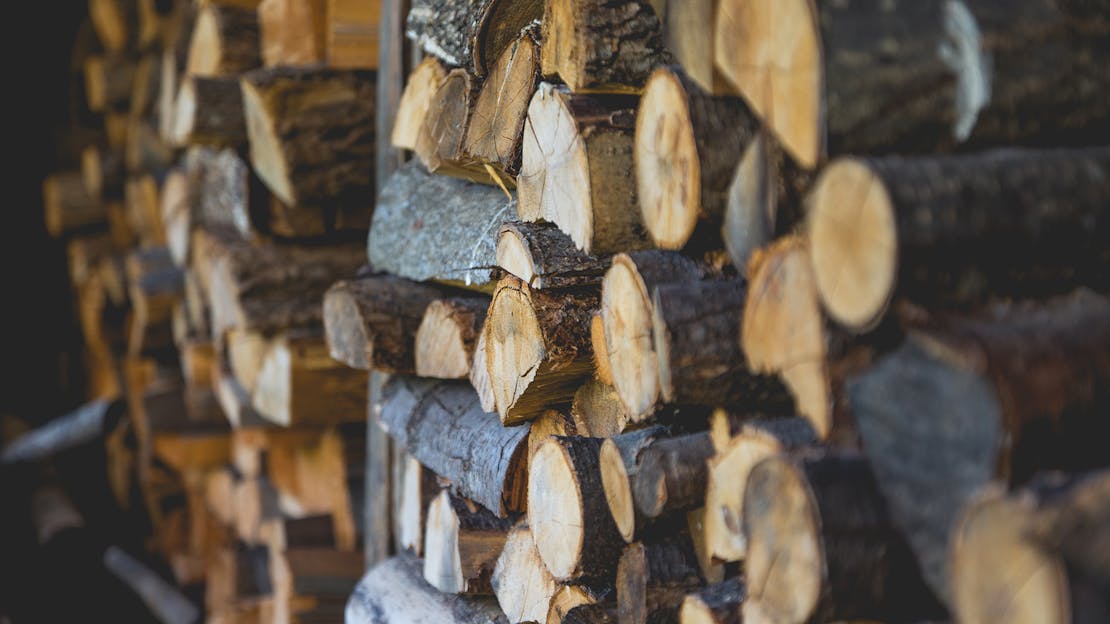
Maximising Warmth: The Art of Storing Kiln-Dried Hardwood Logs to Preserve Burn Quality
As the nights grow colder and the allure of a crackling fire becomes irresistible, the importance of properly storing kiln-dried hardwood logs comes to the forefront. The effectiveness of your heating experience hinges not only on the quality of the logs but also on how well you preserve that quality during storage.
In this guide, we will delve into the nuances of storing kiln-dried hardwood logs and unlocking the secrets to maintaining optimal burn quality from your wood.
Understanding the Essence of Kiln-Dried Hardwood Logs Storage
The journey of a kiln-dried hardwood log doesn't end when it leaves the kiln. In fact, the manner in which these logs are stored post-drying plays a pivotal role in preserving their low moisture content and ensuring a clean and efficient burn. Let's explore the best practices for storing kiln-dried hardwood logs to maximise their burn quality.
1. Shelter from the Elements: The Role of a Dry Storage Area
Ensure that your storage area for kiln dried hardwood logs is dry and protected to prevent moisture absorption, which will help to preserve their burn quality.
The cardinal rule of storing kiln-dried wood is to keep them sheltered from the elements. Moisture is the nemesis of these meticulously dried logs, as it threatens to undo the benefits of the kiln-drying process. Choose a dry storage area, such as a woodshed or covered storage space, to shield the logs from rain, snow, and excessive humidity.
Alternatively you could make your own logs store from pallets or a flat pack kit like our own easy to build pack!
2. Elevate and Ventilate: Combatting Ground Moisture
Elevate kiln dried hardwood logs to prevent ground moisture, a crucial step in maintaining their quality during storage.
Elevating the logs off the ground is a simple yet effective strategy to thwart moisture absorption. Use pallets or a raised platform to keep the logs at least a few inches above the ground. This not only prevents ground moisture from seeping into the logs but also facilitates air circulation around the entire stack, aiding in the maintenance of their low moisture content.
3. Stack with Precision: A Jenga Inspired Approach
Employ a Jenga style stacking method for kiln dried hardwood logs to enhance ventilation and prevent mould growth.
The way you stack kiln-dried hardwood logs matters. Opt for a crisscross or Jenga-style stacking method, allowing for increased airflow between the logs. This not only aids in the continued drying process but also minimizes the risk of mold growth. A well-ventilated stack is a key to preserving the pristine quality of your kiln-dried logs.
4. Embrace the Cover: Tarps and Covers for Protection
Use tarps or covers to shield kiln dried hardwood logs from direct exposure to rain or snow, preserving their burn quality.
While the logs need ventilation, they also require protection from direct exposure to the elements. Employ tarps or covers that are strategically placed to shield the top and sides of the log stack. The cover should extend slightly beyond the stack to prevent rain or snow from infiltrating. This balancing act of ventilation and protection is the hallmark of effective kiln-dried hardwood logs storage.
5. Timing Matters: Plan Your Stack Accordingly
Plan your kiln dried hardwood logs storage promptly after delivery to maximize the retention of their kiln-dried benefits.
The timing of stacking kiln-dried hardwood logs is important. If possible, stack the logs in your chosen storage area promptly after delivery. This minimises the time they spend exposed to the elements and ensures that the benefits of kiln drying are retained. A swift and well-timed storage process sets the stage for a winter filled with cozy fires.
6. Monitor Moisture Levels: A Moisture Meters Role
Use a moisture meter to monitor moisture levels in your kiln dried hardwood logs storage area for ongoing quality control.
In the quest for optimal burn quality, equip yourself with a moisture meter. This handy device allows you to monitor the moisture levels in your storage area. Ideally, the moisture content of the logs should remain consistent with their kiln-dried state. If levels rise, it's time to reassess your storage strategy to maintain the pristine condition of your hardwood logs.
7. Plan for Seasonal Success: Winter Preparation
Prepare your kiln dried hardwood logs storage for winter, protecting them from the challenges posed by cold temperatures and snowfall.
Winter introduces its own set of challenges for kiln-dried hardwood logs storage. As temperatures drop and snowfall becomes a reality, fortify your storage area against the harsh winter elements. A well-prepared storage space ensures that your kiln-dried logs emerge unscathed and ready to deliver warmth when you need it most.
In conclusion, the journey of kiln-dried hardwood logs doesn't end at the kiln; it extends to the storage space where their quality is meticulously preserved. By embracing these storage strategies and paying attention to the timing, ventilation, and protection of your logs, you ensure that each fire you kindle is a testament to the excellence of kiln-dried hardwood logs. Elevate your heating experience by mastering the art of storage—where the warmth of a well-preserved log becomes the heart of your winter sanctuary.
We hope you found this guide helpful in learning how to properly store your firewood. If you would like to other high quality informative articles, the we have a wide range available!
